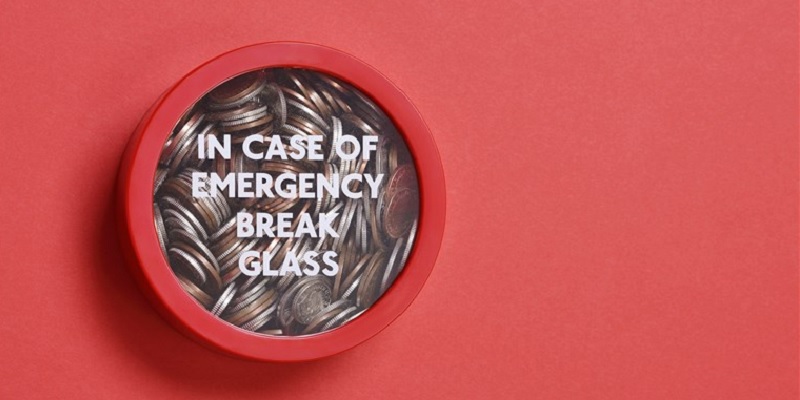 An emergency fund is when someone puts aside some money to use in case of an emergency. There isn’t a specific amount that you’re required to have in this account. However, the typical amount would be around 3-6 months worth of funds. This way you would have something to fall back on just in case you’re in a tough spot. There are about 5 different options where your emergency fund can go towards: checking, normal savings, online high-yield savings, super high-yield savings, and an investment account. Lots of people can use their emergency funds for their accounts combined as well.
An emergency fund is when someone puts aside some money to use in case of an emergency. There isn’t a specific amount that you’re required to have in this account. However, the typical amount would be around 3-6 months worth of funds. This way you would have something to fall back on just in case you’re in a tough spot. There are about 5 different options where your emergency fund can go towards: checking, normal savings, online high-yield savings, super high-yield savings, and an investment account. Lots of people can use their emergency funds for their accounts combined as well.
 |
 |
How the Emergency Fund Works
You would get more money from an FDIC insured savings account and most people don’t know that. Plus, you can gain a 5% interest for most if not all of your emergency fund. Some good accounts to put your emergency funds in: super high-yield savings account, online high-yield savings account, and a checking account. Most people normally keep their emergency funds in a super high-yield account, this way you’ll be able to earn the 5% interest. Some other perks from these accounts is that it will tempt you less to use your money.
It’s also a good idea to keep a buffer in different accounts that way you have something to fall back on. A good amount for an emergency buffer would be $500 towards your checking account since it won’t gain you interest. An emergency fund is great to have especially when you’re able to gain interest from it as well. There aren’t many disadvantages to having too much money inside your account either. You’ll be able to have enough money and a rate of return when you’re in a dire situation.
Putting Your Emergency Fund in Your Checking Account
Normally, your checking account is the first place you’d put your emergency fund towards. If you’re good at saving your money, then having an emergency fund as a buffer in your checking account isn’t a bad idea. However, it’s better if you don’t put a big buffer in your checking account since all the money you keep in there would get you nothing back. The bank should pay you for having your money in their vaults, if they’re not then you shouldn’t be giving them more money. A good amount for your buffer in a checking account would be about $500-$600.
When you put your emergency funds in a checking account, it’s better if the account has no other fees included. If it charges you a monthly fee, then you should consider putting your funds towards a different account. Some other great choices would be an online-only checking account. Ally Bank and Simple are excellent online checking accounts that are completely free of charge. Keep in mind, there are some downsides to an online-only account. It will make it harder for you to make cash deposits. But, if you don’t normally deposit cash, then the online-only bank isn’t such a bad idea. If you do tend to make lots of cash deposits, then a traditional bank won’t hurt as long as their account don’t have any monthly fees.
Types of Savings Accounts
There are traditional brick and mortar banks that offer a savings account included with the account you’re opening. But, if it can be helped, it’s not the best idea to use these as a buffer for your emergency funds. Most will offer extremely low interest rates that won’t do you any good. Rather than putting your emergency funds in a savings account that will offer little to no interest rate, it would be better to use other types of accounts. After the checking account buffer, the next account would be the online high-yield savings account.
An online high-yield savings account will allow you to get much more interest rather than your normal savings account. Most people will typically keep a good amount of their emergency funds in these accounts. There are banks such as: Ally Bank and Capital One 360 that offer these accounts with no additional fees!
Ally Bank is a great choice, they offer a 1% interest (the highest interest rate you can earn). Not to mention, they will even allow you to link up to no more than 20 external bank accounts! This is very beneficial for you for the high-yield savings accounts. Capital One 360 is also an excellent option for an online high-yield account. You’ll be able to make lots of different sub accounts so you can sub-divide your savings.
Investment Accounts
Some people think that it’s a better idea to put your emergency fund in a low-risk allocation like a 50% stock or bond mix. With the allocation, it will get you about 5% in return over a long term period. However, investing your emergency funds this way isn’t the best option you could have. Rather than having a low-risk for your emergency fund and possibly get up to 5% when you could get a guaranteed 5% return with a super high-yield savings account. A super high-yield savings account would do you much better in interest and have less risks towards your emergency funds.
For the people that think that it’s a better idea to invest your emergency fund towards an investment account either don’t know about the 5% interest savings or think it’s not real. Investing your funds would take more effort rather than opening a super high-yield savings account. Plus, there would be no risk when you open a super high-yield savings account.
Conclusion
It’s always a good idea to have an emergency fund to fall back on when you’re in a tough spot. There are many different accounts where you’re able to put your emergency fund into. Some accounts will give you money back and a good interest rate when you put some of your funds into the account.



